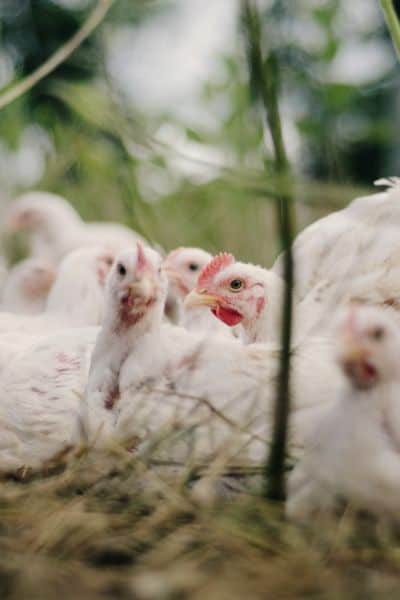7 Important Farm Safety Tips You Need To Implement Today
Owning a farm is one of life’s biggest blessings. Whether it’s a small backyard farm or a large farming business, it’s a massive source of food supply for your home or sale.
Regardless of the size of your farm, you put a lot of sweat and hard work into running it, which is why you need to protect it (and yourself) from some of the most common hazards.
Early detection coupled with the right safety measures will ensure that your backyard farm remains a safe place to work while producing the yields and harvest your hard work deserves. Here are some common farm hazards and how you can manage them.

Large Farm Vehicles And Harvesters
Large farm vehicles like tractors and harvesters are responsible for a lot of accidents on farms. Studies show that tractor accidents are the number one form of farm-related fatalities.
Tractors and other heavy machinery or equipment can be very risky on the farm because they can roll, tip over, or have parts that can harm people without protection.
You can do several things to prevent accidents with farm vehicles and harvesters. For example, only experienced people should be allowed to use them and keep track of who is operating which farm vehicle at what time.
And the biggest offense I see more often than not… Turning off or overriding a safety measure that is installed by the maker of the equipment. Like leaving a heavy toolbox on a seat so the motter or blades keep spinning.
Also, avoid operating your vehicles in high-risk areas of your farm. Regular maintenance and repairs are also important.
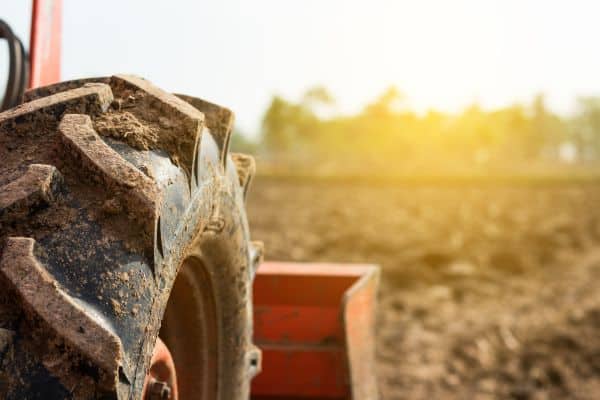
Pests
Many pest species like termites are a major cause for concern for all farmers. They have the potential to significantly dwindle your proceeds and revenue and can even cause enough damage to farming equipment and machinery when left unchecked.
Pests can cause major damage to farming structures before you even realize it, especially wood. Termites, especially, can eat wooden structures at an impressive rate. Even worse, they can turn these structures into their homes and damage them with time.
Other insects like wood bees, woodpeckers, and rodents, can also do significant damage if don’t get a handle on them as soon as you notice them. You can always work with expert pest control services like Terminix if you notice termite infestation on your farm.
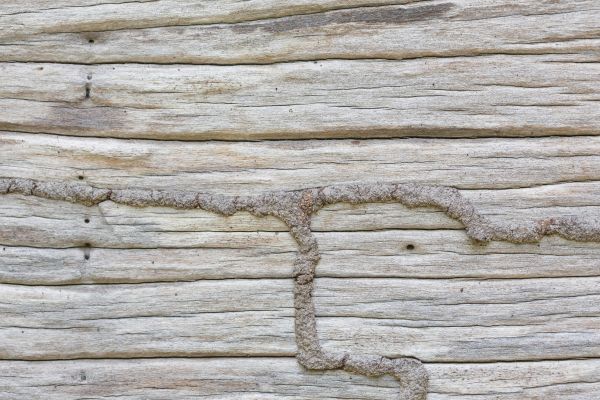
Handling of Large Animals
Working with large animals like horses and cattle comes with risks of injuries from bites, kicks, or even being crushed. Farm animals can be very unpredictable and sometimes hurt you by accident. But is not unheard of for even the most tame ones can turn problematic with no prior warning.
There have been many cases of farm animals chasing down, attacking, and hurting farm owners.
Despite the unpredictable nature of farm animals, using proper handling and always keeping in mind that they are ANIMALS, not humans can minimize or even prevent injuries.
Adequate training paired with gate and fence maintenance is also important. It also helps to recognize and separate aggressive or difficult animals so they don’t become a threat to their handlers and other farm animals.
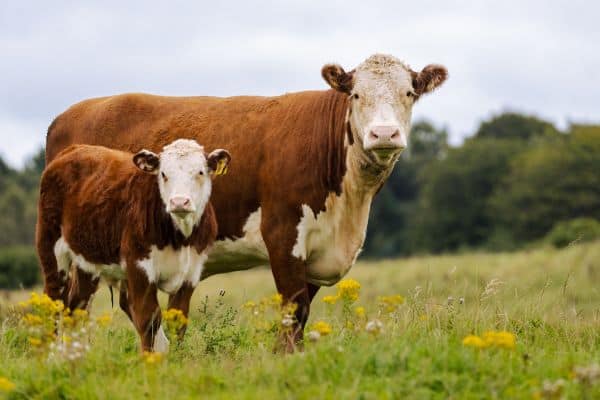
Musculoskeletal Injuries and Chronic Pain
Another common farm hazard comes from repetitive strenuous movement. Lifting, pushing, pulling, shoveling, and carrying heavy items daily on the farm can take a toll on the body, leading to various musculoskeletal injuries. The more you engage in these activities (without proper care and treatment), the more chronic your pain will get. Proper posture is important when handling any farming activity, especially if you already feel pain. You can also invest in farm equipment designed to handle some difficult tasks and ease the strain on your body.
Protective Gear
Protective gear plays a crucial role in minimizing the risk of injuries and accidents on the farm. Whether you’re operating machinery, handling tools, or working with livestock, wearing appropriate protective gear can significantly reduce the likelihood of being injured.
It’s tempting to think “Oh, I just have to do this one thing real quick”. But that’s when accidents happen.
By providing a physical barrier between you and potential hazards, protective gear enhances your safety and allows you to work confidently and efficiently.

Types of Protective Gear
- Gloves: Hands are particularly vulnerable to injuries on the farm, whether from sharp tools, abrasive materials, or bites and scratches from animals. Wearing sturdy gloves can protect your hands from cuts, punctures, and abrasions, allowing you to handle tasks safely and comfortably.
- Goggles or Safety Glasses: Protecting your eyes is essential when working with tools or equipment that generate flying debris or dust. Goggles or safety glasses with impact-resistant lenses shield your eyes from potential hazards, reducing the risk of eye injuries and ensuring clear vision while you work.
- Sturdy Footwear: Farm work often involves walking on uneven terrain, handling heavy objects, and navigating through potentially hazardous areas. Sturdy, closed-toe footwear with slip-resistant soles provides stability and protection for your feet, reducing the risk of slips, trips, and injuries from falling objects or crushing hazards.
- Protective Clothing: Wearing appropriate clothing can also contribute to your safety on the farm. Long pants and sleeves offer protection from thorny plants, sharp objects, brushing against wire, or nails from small animals. Durable fabrics provide an additional layer of defense against cuts, abrasions, and insect bites.
Selecting and Using Protective Gear: When choosing protective gear, opt for high-quality items that are designed specifically for farm work. This is a situation where you get what you pay for and your clothes will rip easily of you try to get the cheap option.
Getting the right equipment might feel a little daunting. It takes time to save up for the things you need to run a farm. But creating a budget doesn’t have to be scary. I walk you through how to do that in this masterclass.
Get help and find motivation as we build our intentional backyard farm together.
The Importance of Fire Safty And Prevention
Fire prevention and preparedness are paramount on the farm to safeguard lives your property. Especially when burning trash, brush, or household items, it’s crucial to exercise caution and implement safety measures to minimize the risk of accidental fires.
Burning Trash and Brush Safely
- Check Local Regulations: Before burning trash or brush, familiarize yourself with local regulations and obtain any necessary permits. Follow guidelines regarding burn bans, restricted burn days, and acceptable materials for burning.
- Choose an Appropriate Location: Select a safe location for burning, away from structures, vegetation, and other flammable materials. Clear the area of debris and ensure adequate clearance around the burn site.
- Monitor Weather Conditions: Check weather forecasts and avoid burning on windy days or during dry, hot conditions when the risk of fire spreading is heightened.
- Use a Burn Barrel or Fire Pit: Consider using a burn barrel or designated fire pit to contain flames and prevent them from spreading. Ensure the container is stable, made of non-combustible materials, and equipped with a lid or screen to control embers.
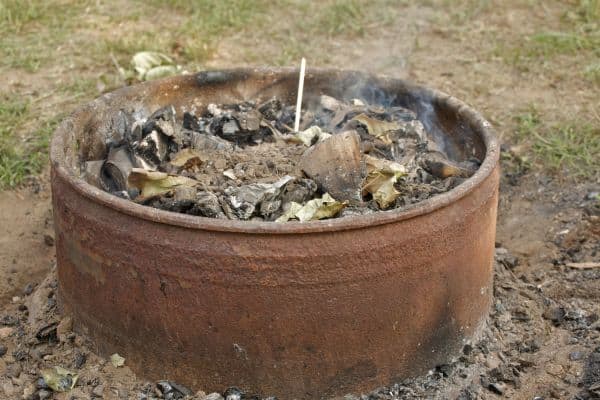
Household Waste Disposal
- Reduce, Reuse, Recycle: Minimize the need for burning household items by practicing waste reduction, recycling, and composting whenever possible.
- Proper Disposal: Dispose of household waste responsibly by following local waste disposal guidelines. Use municipal waste collection services or designated drop-off locations for hazardous materials like batteries, electronics, and chemicals.
- Alternative Disposal Methods: Explore alternative disposal methods for items that cannot be recycled or composted, such as donating usable items to charity or participating in community clean-up events.
Be Prepared For Problems Even If You Are Careful
- Maintain Fire Extinguishers And Keep A Hose Near By: Keep fire extinguishers readily accessible in key locations around the farm, such as near buildings, equipment, and outdoor work areas. If possible run a hose close to the fire pit so if something starts to come out of the pit you can handle it quickly.
- Create Defensible Space: Clear vegetation and combustible materials from around structures to create defensible space that helps prevent fires from spreading. Trim tree branches, mow grass regularly, and remove debris from gutters and roofs.
- Develop an Emergency Plan: Establish an emergency response plan that outlines procedures for evacuating people and animals in the event of a fire. Assign roles and responsibilities to family members or farm employees and conduct regular drills to practice emergency procedures.

By implementing fire safety practices and exercising caution during activities like burning trash, brush, and household items, you can minimize the risk of accidental fires on your homestead. By following local regulations, choosing appropriate burn locations, and practicing responsible waste disposal, you can protect your property and the safety of your family and community.
Chemicals and Pesticide Handling
Chemicals such as pesticides, fertilizers, and cleaning agents play essential roles in modern farming practices, but being careless with them can cause significant risks to your health as well as your pets and livestock. By following best practices for chemical management, you can ensure the safety of yourself, your family, and your farm.
Safe Handling Practices
- Read and Follow Labels: Always read and follow the instructions and safety precautions provided on product labels. Pay attention to application rates, mixing instructions, and recommended protective gear.
- Use Protective Gear: Wear appropriate protective gear, such as gloves, goggles, masks, and coveralls, when handling chemicals. This helps prevent skin contact, inhalation, and accidental ingestion.
- Proper Mixing and Application: Mix and apply chemicals according to manufacturer recommendations and guidelines. Use calibrated equipment to ensure accurate application rates and minimize the risk of overapplication or drift.
- Avoid Contamination: Prevent cross-contamination by using dedicated equipment for mixing and applying chemicals. Clean and rinse equipment thoroughly between uses to remove residue and prevent unintended exposure. Trust me. You don’t want a science class style accident on your backyard farm.
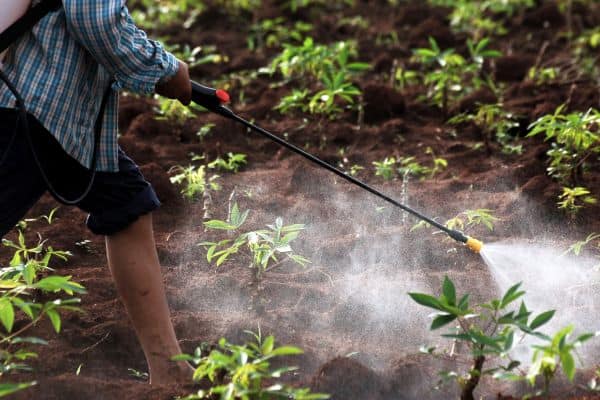
Safe Storage Practices
- Secure Storage Areas: Store chemicals in designated areas that are secure, well-ventilated, and inaccessible to children, pets, and unauthorized personnel. Lock cabinets or storage sheds to prevent accidental exposure or theft.
- Separation and Segregation: Store chemicals separately based on their compatibility and hazard classification. Keep flammable liquids away from heat sources and oxidizing agents, and segregate pesticides from fertilizers to prevent cross-contamination.
- Proper Containers: Use original containers with intact labels for storing chemicals whenever possible. If transferring chemicals to alternate containers, ensure they are made of compatible materials and clearly labeled with product information and safety warnings.
- Spill Containment and Cleanup: Have spill containment materials, such as absorbent pads, kitty litter, or sand, readily available in case of spills or leaks. Teach everyone what to do if they find a backyard farm accident involving chemicals no matter how small.
Disposal of Chemicals
- Follow Local Regulations: Dispose of unused or expired chemicals according to local regulations and guidelines. Contact your local waste management authority or extension office for information on proper disposal methods and collection events.
- Never Pour Down Drains: Avoid pouring chemicals down drains, sinks, or toilets, as they can contaminate water sources and harm aquatic life. Instead, follow recommendations for hazardous waste disposal or participate in community collection programs.
- Recycling and Repurposing: Whenever possible, recycle empty chemical containers or repurpose them for non-chemical storage. Rinse containers thoroughly before recycling to remove residue and reduce environmental impact.
Free Farm Goal Planner!!!
➡️Get my proven system for choosing your farm goals so you don’t get burnt out.
Farm Pond Safety: Protecting Animals and People
Only two weeks after moving to our new property our old Saint Bernard fell into our farm pond. Thankfully I was able to lift him out with a baby carrier wrap and he made it. But it was a rough two days until he was back on his feet again. So naturally this hits close to home.
Farm ponds serve as valuable resources for irrigation, livestock watering, and recreational activities, but they also present inherent risks to both animals and people. By implementing safety measures and teaching everyone how to stay safe, you can minimize the risk of accidents and ensure a safe environment around your farm pond.
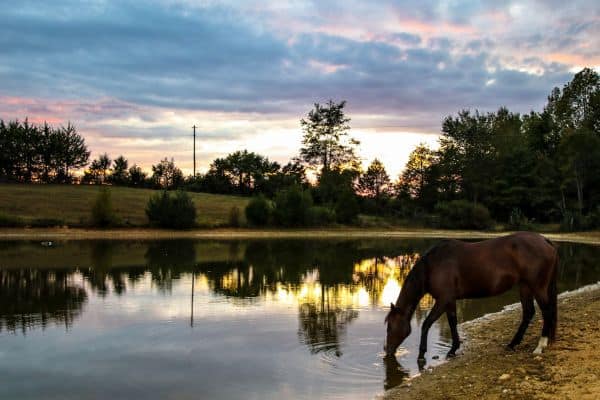
Fencing and Barriers
This is the safest and most surefire way to prevent major injuries.
- Secure Perimeter Fencing: Install sturdy perimeter fencing around the farm pond to prevent unauthorized access by livestock, pets, and wildlife. Use materials such as wire mesh or wooden panels that are tall enough to deter animals from attempting to enter the water.
- Childproof Barriers: If the farm pond is located near residential areas or frequented by children, consider installing childproof barriers, such as gates or fences with self-closing mechanisms and latches out of reach of small children.

Clear Signage and Markings
- Warning Signs: Place clear, visible warning signs around the farm pond to alert visitors to potential hazards, such as deep water, steep banks, and underwater obstacles. Include instructions for safe behavior, such as swimming supervision and no diving.
- Depth Markers: Install depth markers along the shoreline or on buoys to indicate water depth and warn swimmers of shallow or deep areas. This helps prevent accidental injuries, especially for individuals unfamiliar with the pond’s layout.
Supervision and Education
- Supervise Children and Pets: Always supervise children and pets when near the farm pond, even if they are strong swimmers. Encourage responsible behavior around the water and teach children to respect safety rules, such as no running or roughhousing near the pond.
- Water Safety Education: Provide water safety education to farm residents, employees, and visitors, emphasizing the importance of swimming with a buddy, and knowing how to recognize and respond to emergencies.
Emergency Preparedness
- Safety Equipment: Keep safety equipment, such as life jackets, throw ropes, and reaching poles, readily accessible near the farm pond. Ensure that everyone knows how to use this equipment in case of emergencies.
- Emergency Action Plan: Develop an emergency action plan that outlines procedures for responding to water-related incidents, such as drowning or near-drowning events. Assign roles and responsibilities to farm personnel and conduct regular drills to practice emergency responses.
Regular Maintenance
- Vegetation Management: Regularly maintain vegetation around the farm pond to prevent overgrowth that can obstruct visibility, create hiding places for wildlife, and increase the risk of entanglement or injury for swimmers.
- Inspect Infrastructure (if you have them): Periodically inspect and maintain infrastructure associated with the farm pond, such as docks, piers, and access points, to ensure structural integrity and safety for users.
By implementing safety measures such as fencing, clear signage, supervision, and emergency preparedness, you can create a safe environment around your farm pond for both animals and people.
This is definitely a boring part of farm management but trust me. It’s not a matter of if but when something happens you are going to wish you had done something to prevent it. If the cost of implementing some of these things is the main hold up I HIGHLY encourage you to start creating income streams from your backyard farm that can help you pay for them.
No matter the size a farm can be very costly to the point that some years you just break even. But if you have multiple income streams and learn to market your farm you can make an income that you can thrive on.



